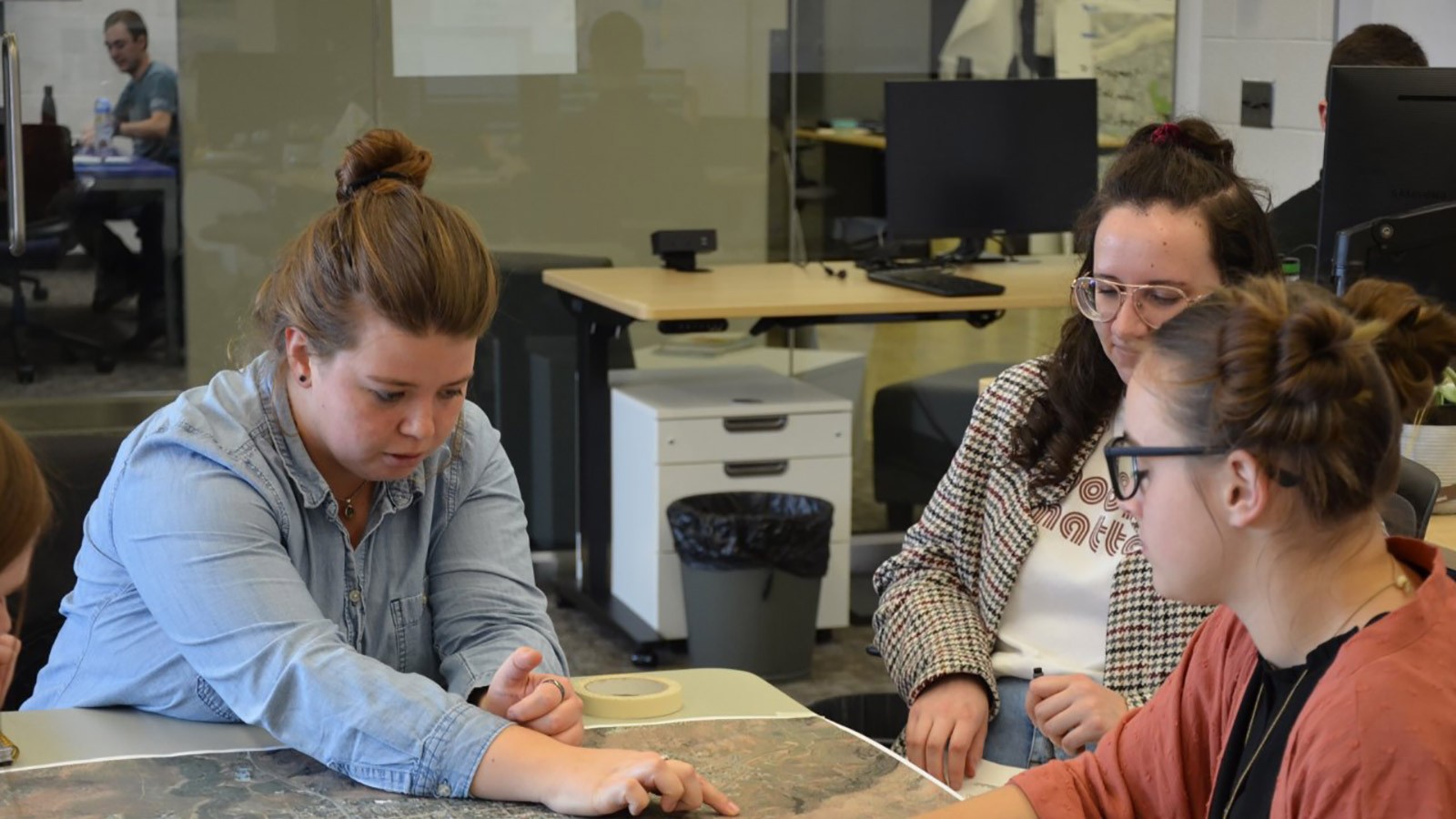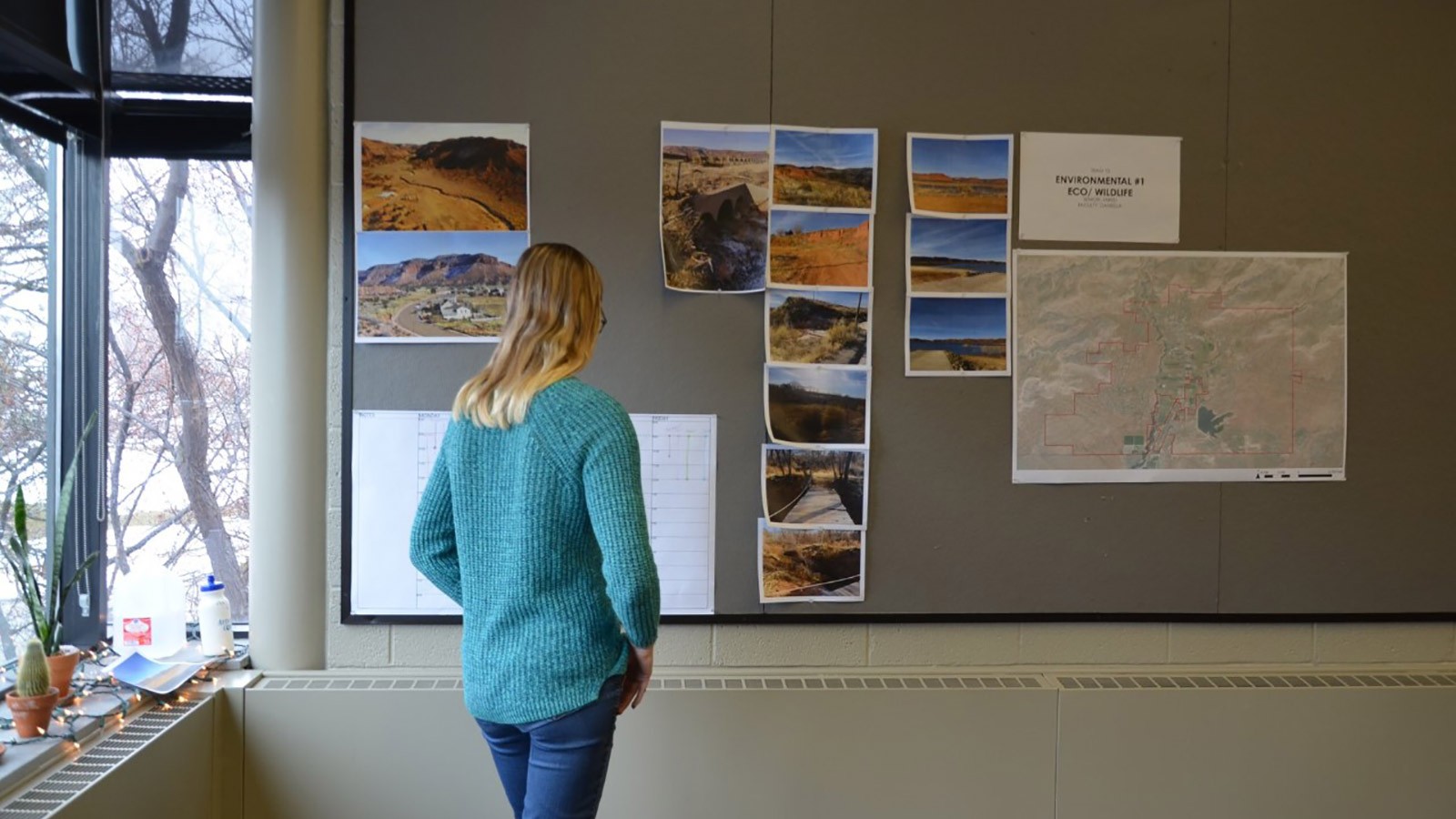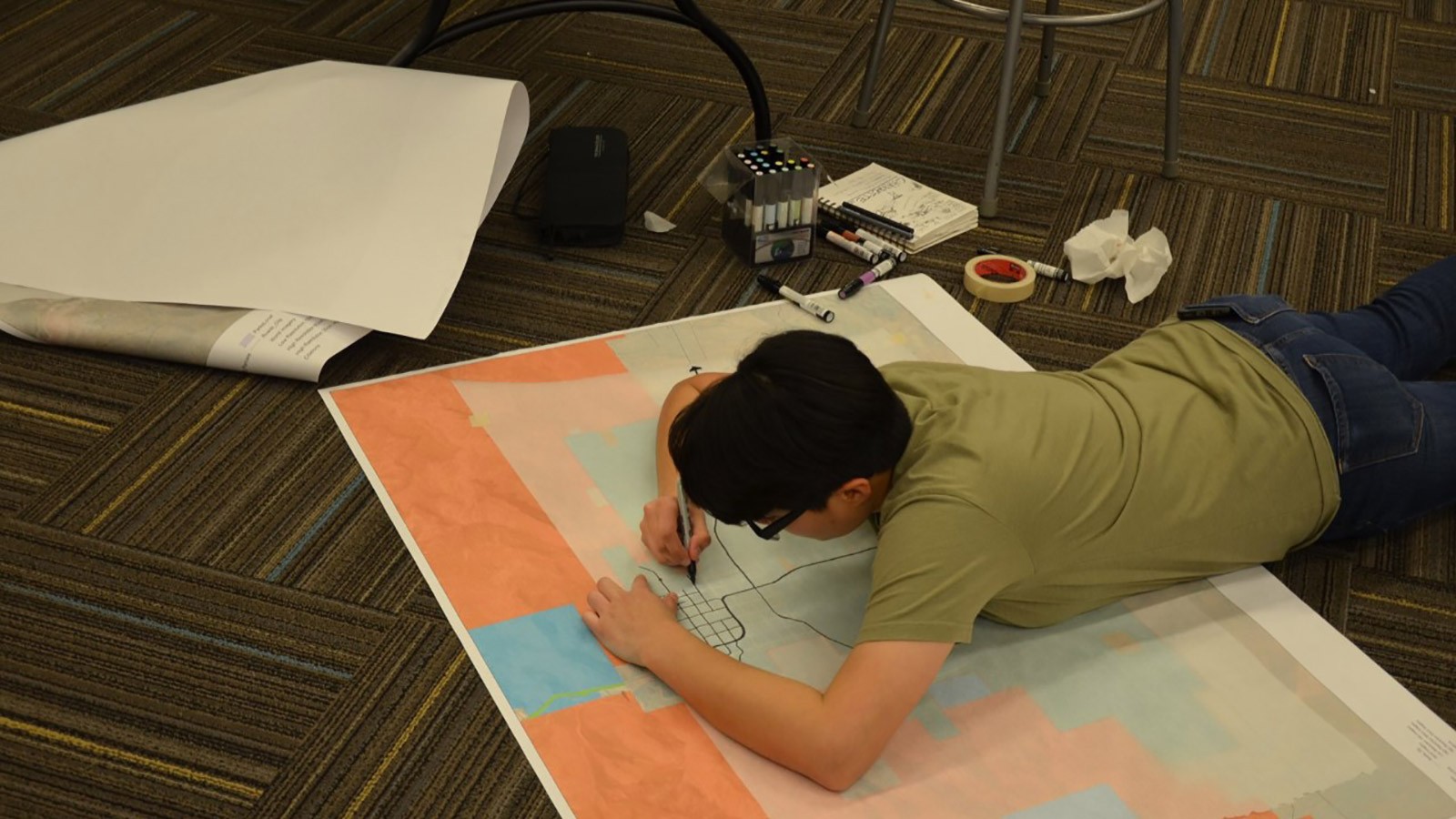Landscape Architecture Students Focus on Helping Kanab Thrive
Place of Willows. Little Hollywood. Greatest Earth on Show.
By Ammon Teare |
LAEP students Nikki Holbrook, Britton Lund and Hannah Green (left to right) at work on their group's analysis and recommendations for Kanab during the department's annual design charrette week.
Place of Willows. Little Hollywood. Greatest Earth on Show.
Kanab, Utah, has gone by many names at each stage of its development. Landscape Architecture and Environmental Planning (LAEP) students at Utah State University created a different moniker: Kanab, a Western Classic.
Beginning with site visits in late 2019, LAEP students and faculty members researched Kanab’s layout, history, ecology, existing plans, and citizens’ concerns as part of the department's annual charrette. A charrette is a design and collaboration process characterized by intense focus and teamwork, and—in the case of LAEP—a yearly tradition where students engage in a real-world planning and design project that helps Utah communities.
During an intensely focused week (prior to USU courses moving online due to COVID-19), over 100 students, from freshmen to graduate students, collaborated in 11-person teams covering the 12 principal areas of study. Additionally, each member of the LAEP faculty assisted a particular team, and two emeritus professors and officials from Kanab and Kane County were present to contribute and spectate.
Kane County Economic Director Matt Brown said, “What I have really loved about this is we get to have 200 eyeballs focused on Kanab, and they see it with a different perspective. There were some things [presented] we thought about in the past, and now I think we should put it in use.”
The western motif is especially fitting for the red-rock rimmed community in southwestern Utah that was once synonymous with cowboys and pioneers. As a blueprint for development, the LAEP students proposed Kanab address its needs as set, stage, actors, plot, and costumes.
Set refers to the unique scenery and landscape that first brought Kanab national attention. As students on the ecology and water teams noted, Kanab sits near the confluence of several massive geologic features, including the Great Basin, Colorado Plateau, Kaibab Plateau, and the Grand Canyon.
Stage and costumes refer to the historic structures and classic design that Kanab showcases. Students on the tourism, transportation, connections, and history teams presented ideas for updating tours, improving access to public information at historical sites, making changes to zoning and making city streets more environmentally pleasing and safe.
Actors are the community members as well as visitors. LAEP students mingled with residents at meetings held in Kanab, and invited guests contributed during the charrette in Logan.
Plot refers to events and activities available to tourists and citizens alike. Among the teams’ recommendations were to add a new public recreation center, an observatory to capitalize on the area's dark skies and to create a visitor center in addition to planning more activities during the winter and fall when tourist traffic slows.
The team tasked with describing character, the final aspect of the charrette, set the focus on “Kanab, a Western Classic.” Presentations were given by undergraduates using the data, maps, artwork, and other media prepared by their respective teams.
“The people of Kanab are aware of the changes that are coming, and that’s why working together and finding common ground like we've been doing is more important than ever,” said senior LAEP student Rob Lozanoff.
Kanab resident and artist Yulia Badian attended the charrette presentation with her daughter. Badian, originally from Austria by way of the United Kingdom, considers Kanab her home since she migrated to the small town for her daughter’s education.
“It’s so moving and so lovely to hear them talk about a place I love so much,” Badian said. “I was really impressed with everyone. Most of the presentations had an element of keeping what’s there and making it better—changing from a big town to a small city.”
At the end of the semester, senior students representing teams organized around each facet of the project presented their semester’s work of further developing the plans and ideas introduced in the charrette to an audience of Kanab officials and citizens, and LAEP faculty. In accordance with best practices for public health, the students’ presentations were viewed via web-conferencing tools and students answered questions from stakeholders in real-time.
Using the recorded questions and other feedback from citizens, a final presentation will be given in Kanab on June 5. As with years past, accepted ideas will be implemented in Kanab’s development plans, and students may someday be able to return and see their proposals brought to life.
Each year all students in the Department and Landscape Architecture and Environmental Planning participate in an intensive assessment of development issues for a city or other entity in Utah and present creative solutions and recommendations. This year's charrette week and initial presentation was in March, just prior to all instruction moving online due to COVID-19.
Student Amy Cervantes working on visuals for the design charrette presentation.
WRITER
Ammon Teare
Writer
College of Agriculture and Applied Sciences
ammon.teare@usu.edu
CONTACT
Sean Michael
Department Head
Landscape Architecture and Environmental Planning
sean.michael@usu.edu
TOPICS
Community 444stories Utah 371stories Agriculture 225stories Engagement 95stories Design 82stories Landscapes 51stories Rural Development 43storiesComments and questions regarding this article may be directed to the contact person listed on this page.











